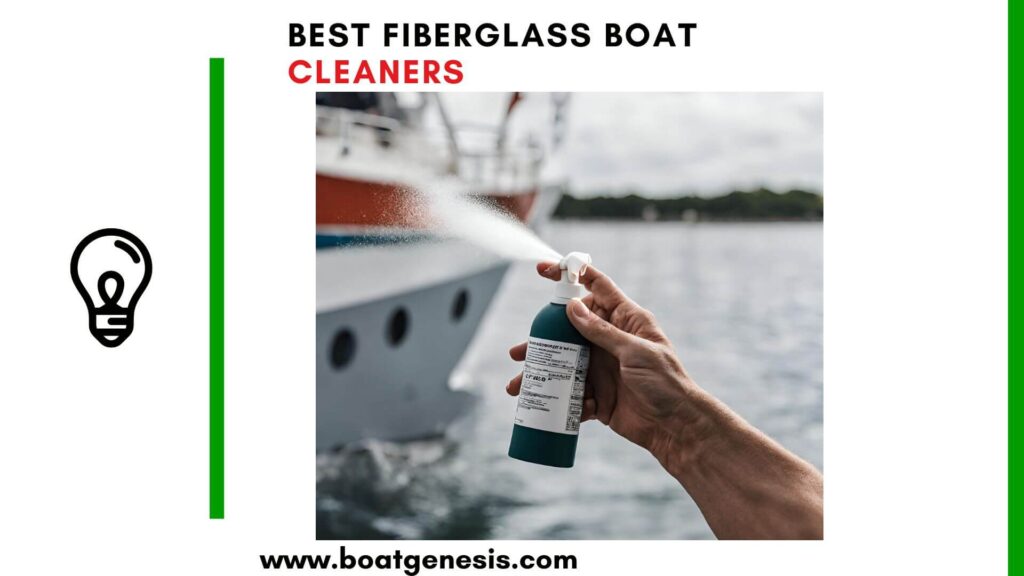Removing silicone from fiberglass boats can seem challenging, but it doesn’t have to be.
The key to effectively removing silicone is to use the right tools and methods that won’t damage the fiberglass surface.
With the proper approach, you can maintain the integrity of your boat while achieving a clean finish.
To start, it’s essential to understand how silicone interacts with fiberglass and what tools are available for the removal process.
Preparation is vital, ensuring that you gather all necessary materials before diving in.
You’ll find several effective techniques here that can save time and effort. These include scraping, applying solvents, or using other methods.
After removing the silicone, some finishing touches can help prevent future buildup. This post will guide you through each step and provide practical solutions for your fiberglass boat.
KEY TAKEAWAYS
- Use appropriate tools to effectively remove silicone without harming the fiberglass.
- Proper preparation helps streamline the removal process.
- Preventative measures can reduce future silicone buildup.
Understanding Silicone and Fiberglass Components

Silicone is commonly used in the boating industry due to its flexible and waterproof characteristics.
Knowing how silicone interacts with fiberglass is essential for effective removal without damaging your boat’s surfaces.
Characteristics of Silicone and Fiberglass
Silicone is a synthetic material known for its durability and resistance to moisture and temperature changes. It forms a strong bond, making it ideal for sealing joints, seams, and fittings on boats.
Fiberglass, often coated with gelcoat, is lightweight yet strong. It offers excellent resistance to water and corrosion.
Gelcoat is the outer layer that provides a smooth finish and additional protection.
When silicone is applied, it can adhere firmly to the gelcoat, making removal a challenge. You need to be careful during this process to avoid damaging the fiberglass or gelcoat.
Common Types of Silicone Used on Boats
There are several types of silicone sealants used in boating, each suited for specific applications.
Marine Silicone Sealants: These are designed specifically for boats and offer excellent adhesion to fiberglass and gelcoat. They are typically waterproof and can withstand harsh marine conditions.
General Purpose Silicone: This type may not be as durable as marine-grade options but can still be effective for many projects. It is ideal for less critical areas.
High-Temperature Silicone: Useful for parts exposed to heat, such as engine compartments, this type maintains its seal even in elevated temperatures.
Understanding the characteristics of these silicones can help you choose the right product for your needs while ensuring a secure bond to the fiberglass surface.
Preparation for Silicone Removal

Before starting the silicone removal process, it’s crucial to get ready by taking safety measures and gathering the necessary materials.
Proper preparation helps ensure a smooth and effective removal without damaging your fiberglass boat.
Safety Measures and Material Handling
Safety should always come first. Before you begin, put on safety glasses and gloves to protect your skin and eyes from chemicals.
Silicone removers can be harsh, so it’s wise to work in a well-ventilated area.
Make sure to keep any flammable substances away from heat sources.
If you’re using acetone or mineral spirits, be cautious as these can ignite easily. Store these chemicals in approved containers and avoid direct skin contact.
When handling tools, such as putty knives or razor blades, use care to prevent cuts or injury. Dispose of old silicone properly, as it can be a slip hazard if left lying around.
Tools and Materials Needed
Gather the right tools and materials before you start. You’ll need the following items:
- Putty knife: This helps in scraping off larger chunks of silicone.
- Razor blades: Use these for precision work around tight areas.
- Mineral spirits or acetone: These solvents can soften the silicone for easier removal.
- Isopropyl alcohol: Ideal for cleaning up any residue after removal.
Ensure you have clean rags to wipe surfaces and absorb excess solvent.
Using proper tools not only speeds up the process but also minimizes the risk of damaging the fiberglass.
How to Remove Silicone from Fiberglass Boat?

Removing silicone from fiberglass can be challenging, but it is important for maintaining your boat’s appearance and performance.
You can use mechanical methods, chemical solvents, or a combination of both for effective removal.
1. Mechanical Methods for Silicone Removal
Mechanical methods involve scraping or sanding to physically remove silicone.
Use a plastic scraper to avoid damaging the fiberglass surface. Gently lift the edge of the silicone and pull it away.
If silicone is stuck, you may need to scrub it with fine-grit sandpaper.
When doing this, work slowly and carefully to prevent scratches.
A power sander can be effective for larger areas but requires careful handling. Always wear a mask and goggles to protect yourself from dust particles.
2. Chemical Solvent Application Techniques
Chemical solvents can help dissolve silicone residue more easily. Common options include turpentine, gasoline, or specialized silicone removers.
Apply your chosen solvent to a cloth and rub it on the silicone. Allow it to sit for a few minutes to break down the adhesive.
You may need to repeat this step for thick residue. After application, use the plastic scraper or a cloth to wipe away the softened silicone.
Always test the solvent on a small area first. This ensures it won’t damage the fiberglass. Follow the manufacturer’s directions for safety and effective use.
3. Post-Removal Surface Cleaning
After removing the silicone, clean the area thoroughly.
Use a mixture of soap and water to wash away any remaining solvent or debris. Rinse well with clean water and dry the surface completely.
For any lingering residues, a gentle adhesive remover can be used. Apply it as per the product’s instructions.
This step helps prepare the fiberglass for any new coatings or repairs you may plan.
Maintaining a clean surface will greatly improve the longevity and appearance of your boat. Regularly check for silicone buildup to avoid extensive cleaning later on.
Also read: Best marine varnishes and sealants for your boat
Finishing Touches and Preventative Measures

After removing silicone from your fiberglass boat, it’s important to restore the gelcoat and take steps to prevent future issues. This ensures your boat maintains its appearance and performance.
Restoring Gelcoat After Silicone Removal
Once you have successfully removed the silicone, inspect the gelcoat for any damage. You might find scratches or dull areas.
Use a gelcoat repair kit to address these spots.
Sand the affected areas lightly with 80-grit sandpaper. This prepares the surface for refinishing.
After sanding, apply a polymer-based gelcoat repair product specifically designed for fiberglass.
This can help restore the original sheen and protect your hull and deck. Allow the repair to cure fully before using the boat.
Regular waxing can also help maintain the finish and protect against future adhesion.
Tips for Preventing Future Silicone Adhesion Issues
To avoid future problems with silicone sealants, consider the type of sealant you use. Products like 4200 and 5200 are popular marine adhesives, but they can create challenges if you need to remove them later. They bond strongly and can be difficult to work with.
Before applying any sealant, ensure the surface is clean and dry. This reduces the risk of future buildup.
Using a barrier coat can help protect the gelcoat from adhesive damage. Also, limit the use of silicone around sensitive areas and consider alternatives for sealing.
Regular maintenance and inspections will help you identify potential issues before they arise.
This article was all about how to remove silicone from fiberglass boat. Hope you have gained value from it.

Founder of BoatGenesis, Warren has hands-on experience in fiberglass boat repairs, marine equipment testing, and powerboat building. Learn more about Warren.



